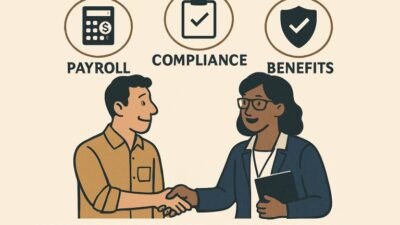In today’s fast-paced business world, having a strong online presence is no longer a “nice-to-have”; it’s essential for survival. No matter how great your products or services are, if people can’t find you online, your competitors will grab the attention instead. Customers now search, compare, and make purchase decisions digitally. Whether you’re running a coffee shop, a small retail store, or a consulting service, you need more than just word-of-mouth to grow.
The good news is that digital marketing levels the playing field. You don’t need a massive budget to make an impact. With the right strategies, even small businesses can connect with highly targeted customers, increase visibility, and compete effectively against larger brands. The challenge, however, is figuring out where to start.
With so many platforms and tactics available, it’s easy to feel overwhelmed. That’s why focusing on the essentials is the best way forward. Mastering the basics of digital marketing allows you to build a foundation for sustainable growth while keeping your budget in check. Let’s walk through the top essentials every small business should prioritize, beginning with the power of paid advertising.
Paid Advertising: Making Every Dollar Count
One of the most effective ways for small businesses to reach potential customers quickly is through paid advertising. Platforms like Google Ads make it possible to put your business in front of people who are already searching for products or services like yours. Instead of waiting months for organic reach to build, paid ads give you immediate visibility in the right place at the right time.
Success in paid advertising often comes from optimised google ads strategies that focus your budget on high-intent searches, ensuring you only pay for clicks with real potential to convert. Properly managed campaigns can help you attract high-quality leads, improve your click-through rates, and avoid wasting money on irrelevant searches. By focusing on targeted keywords, writing compelling ad copy, and monitoring performance closely, you can drive consistent traffic to your website without overspending.
For small business owners, this approach is a game-changer. Paid advertising not only helps you compete with larger companies but also gives you the flexibility to scale your reach while maintaining control over costs. When managed effectively, it doesn’t just bring in more clicks, it brings in the right clicks from customers who are ready to buy.
Content Marketing: Building Trust Through Value
While paid ads bring fast results, content marketing builds trust over time. Customers are more likely to buy from businesses that educate and guide them, not just sell to them. Publishing useful blogs, videos, or how-to guides positions your brand as a reliable source of information.
For example, a small fitness studio could share nutrition tips, workout plans, or success stories from clients. This type of content not only improves visibility but also creates a deeper connection with the audience. When customers see your business consistently providing value, they’re more likely to return and recommend you to others.
The most important factor here is consistency. You don’t need to publish daily, but regular content updates help keep your brand relevant and visible in search results.
Social Media Presence: Connecting Where Customers Are
Social media is one of the most cost-effective tools small businesses can use to build relationships. The trick is not to be everywhere at once, but to choose platforms where your target audience spends most of their time.
If you’re a boutique clothing store, Instagram and TikTok might work best for showcasing new arrivals. If you’re offering business services, LinkedIn could be more effective for professional networking. Social platforms allow you to engage directly with customers, answer questions, and even provide customer support.
Engagement is the real currency here. Instead of posting and forgetting, focus on conversations. Reply to comments, share customer photos, and create polls or Q&A sessions. These small actions build loyalty and show that your business values its community.
Search Engine Optimization (SEO): Being Found Organically
Search Engine Optimization (SEO) may sound intimidating, but it simply means making your business easy to find on Google. While paid ads can get you quick visibility, SEO helps you build a long-term presence without paying for every click.
Local SEO is particularly powerful for small businesses. Claiming and optimizing your Google Business Profile, collecting reviews, and using location-based keywords ensure that nearby customers find you first. For example, if someone searches “best bakery near me,” you want your name to appear at the top.
SEO also involves optimizing your website structure, creating quality content, and ensuring your site loads quickly on mobile devices. Though results take time, the payoff is worth it because organic traffic tends to be more consistent and cost-effective over time.
Analytics & Data Tracking: Making Informed Decisions
One of the biggest mistakes small businesses make is guessing what works instead of using data. Free tools like Google Analytics can show you exactly where your traffic comes from, how long people stay on your site, and which campaigns drive sales.
By tracking performance, you can identify what’s worth your investment and what needs improvement. For instance, if you notice most of your traffic comes from Facebook, you may want to invest more effort there. If certain blog posts bring in high traffic, create more content around similar topics.
Digital marketing doesn’t have to be complicated or overwhelming. By focusing on the essentials, paid ads, content, social media, SEO, email marketing, data tracking, and online reputation, you create a solid foundation for growth.
Small businesses may not always compete with large companies in terms of budget, but with the right strategies, you can level the playing field. Start small, master one area at a time, and build on your progress. The combination of short-term wins and long-term investments will put your business on the path to sustainable success.
Remember, the goal is not to do everything at once but to do the most important things consistently and effectively. By doing so, you’ll not only reach more customers but also build lasting relationships that keep them coming back.



